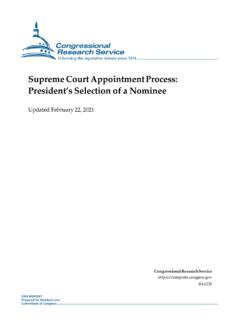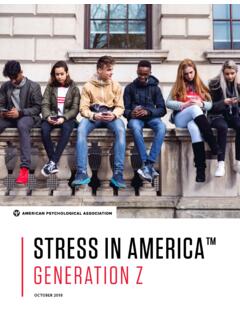Transcription of Unconscious bias and diversity training what the evidence says
1 Unconscious bias and diversity training what the evidence says 1 Unconscious bias and diversity training commonly feature in organisations strategies for creating a fairer and more inclusive workplace. It is easy to procure this training - training providers are many and varied - but evidence that their training content and techniques works is lacking. This document provides an overview of research into the design and efficacy of Unconscious bias and diversity training . This and other research reviews concludes that training interventions do not seem to be effective at improving diversity outcomes within workplaces. Unconscious Bias training (UBT) Unconscious biases can influence a person s judgement without them being aware of it. Unconscious bias training in the workplace aims to make people aware of potentially harmful Unconscious biases and to reduce the impact of those biases on their interaction with others.
2 While some types of Unconscious bias training may have some limited effects including creating awareness of an individual s own implicit biases and wider diversity and discrimination issues in the very short-term, there is currently no evidence that this training changes behaviour or improves workplace equality in terms of representation of women, ethnic minorities or other minority groups in position of leadership or reducing pay The Equality and Human Rights Commission s assessment of the evidence on UBT examined 18 papers and found that: UBT is effective for awareness raising when using an Implicit Association Test2 (IAT) followed by a debrief, or more advanced training designs such as interactive workshops or longer term programmes to reflectively reduce biases.
3 UBT can be effective for reducing implicit bias, but there is no evidence that it can eliminate it. UBT interventions are not generally designed to reduce explicit bias and those that do aim to do so have yielded mixed results or very small effects. Using the IAT and educating participants on Unconscious bias theory is likely to increase awareness of and reduce implicit bias. The evidence for UBT s ability effectively to change behaviour is limited. Most of the evidence reviewed did not use valid measures of behaviour change. 1 Atewologun, D., Cornish, T., &; Tresh, F. (2018). Unconscious bias training : An assessment of the evidence for effectiveness. Equality and Human Rights Commission; Girod, S., Fassiotto, M.
4 , Grewal, D., Ku, M. C., Sriram, N., Nosek, B. A., &; Valantine, H. (2016). Reducing implicit gender leadership bias in academic medicine with an educational intervention. Academic Medicine, 91(8), 1143-1150. 2 An Implicit Association Test measures the strength of associations between concepts ( black people, or old people) and stereotypes ( hard working or slow) or evaluations ( good or bad). For more information, see here for details on an IAT tool developed by US academics, part of Project Implicit. 2 There is potential for back-firing effects when UBT participants are exposed to information that suggests stereotypes and biases are unchangeable. The CIPD3 noted that, while UBT can increase people s awareness and knowledge of diversity issues, this evidence is generally based on self-reported measures, which may not be reliable.
5 Further, there is no conclusive evidence that diversity training changes attitudes with some studies showing that UBT does not change explicit gender stereotypes either. CIPD noted that there is typically no sustained impact on behaviour and emotional prejudice following UBT, which is not enough in itself to create diverse and inclusive organisations. diversity training diversity training is designed to raise awareness of diversity issues in the workplace and to promote positive interactions between members of different groups. It can help raise awareness but is unlikely to change diversity training packages come in a wide range of formats and there is no standardisation of content. A review of corporate diversity training from 1964-2008 found that:5 diversity training often becomes a check-box exercise.
6 While many diversity training programs were well designed, the cost constraints of larger payrolls can result in content being squeezed into shorter timeframes or facilitated by non-expert internal trainers. Such tick-box training is also often evaluated on the basis of the volume of staff trained, rather than the efficacy of the training itself. This training left participants without tools for behaviour change and could also generate backlash and potentially activate stereotypes. The researchers noted: Some of the unintended consequences were that many left confused, angry, or with more animosity toward differences. With no formal follow-up, employees were left on their own to interpret and internalize what they had learned. Many interpreted the key learning point as having to walk on egg shells around women and minorities choosing words carefully so as not to offend.
7 Some surmised that it meant White men were villains, still others assumed that they would lose their jobs to minorities and women, while others concluded that women and minorities were simply too sensitive. UBT, diversity training and backlash risks research which looked at 830 medium to large US companies over 30 years has found that mandatory diversity training either does not change the number of women in management positions, or actually reduces 3 CIPD (2019) diversity Management that Works: An evidence based review 4 Bezrukova, K., Spell, , Perry, J., &; Jehn, K. (2016). A meta-analytical integration of over 40 years of research on diversity training evaluation. Psychological Bulletin, 142(11), 1227 1274; Chang, , Milkman, , Gromet, , Rebele, , Massey, C.
8 , Duckworth, &; Grant, (2019). The mixed effects of online diversity training . Proceedings of the National Academy of Sciences, 116(16), 7778-7783. 5 Anand, R., & Winters, M. F. (2008). A retrospective view of corporate diversity training from 1964 to the present. Academy of Management Learning & Education, 7(3), 6 Dobbin, F., &; Kalev, A. (2016). Why diversity programs fail. HBR, 94(7/8), 52-60. 3 This backfiring may occur for a number of reasons. There are a number of hypotheses for why, though it has so far been impossible to establish exact mechanisms. Backfires may occur because: people resent being made to do something and so are not receptive to the training ; the training brings to mind unhelpful stereotypes which people then act upon; the training makes people think that the organisation has now solved its diversity problems and that any difference in outcomes or experiences are justified, or at least not due to individuals biases.
9 We therefore do not recommend prioritising the use of resources on Unconscious bias or diversity training over alternative interventions which have a more promising evidence Why are UBT and diversity training not effective? The following hypotheses have been made:8 1. In general, short-term educational interventions do not change people especially where people have acquired biases over a lifetime of media exposure and real-world experience; 2. UBT can actually activate stereotypes, making them more likely to come to mind after the training has finished. This can happen both when we are asked to try to suppress our own stereotypes, or when we are asked to confront them; 3. training can make majority groups feel left out and which in turn can reduce their support for diversity ; 4.
10 People react negatively towards efforts to control them and therefore may be resistant to UBT as mandatory training which can make them feel disempowered; 5. training can make employees complacent about their own biases not taking responsibility for avoiding discrimination following training , perhaps because of a belief that the workplace has been made free of bias; 6. training may also have a moral licensing effect, whereby an individual who attended training (which was good for diversity ) feels freer to go on to make a decision which does not improve diversity ( hiring a candidate with a similar profile to their existing team) as their original sense of virtue counteracts ongoing efforts to monitor persistent What might make UBT and diversity training more effective?















